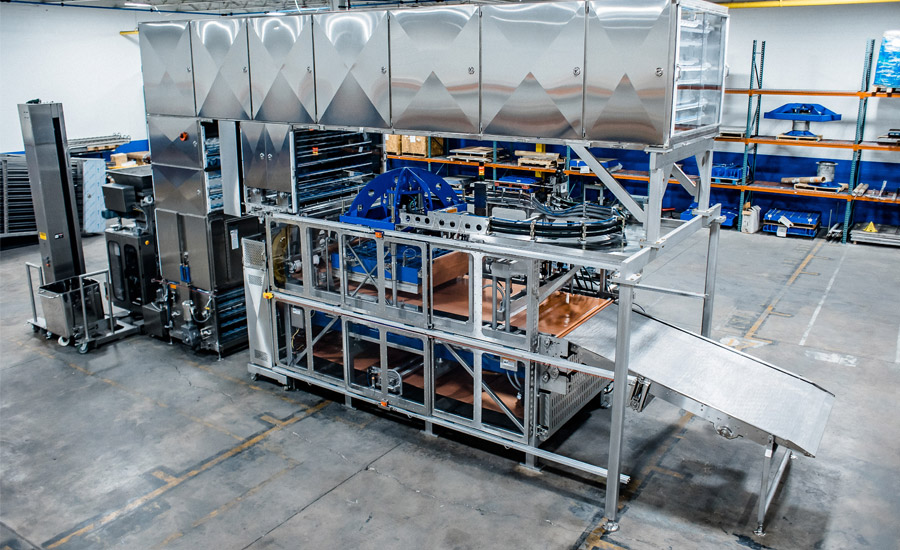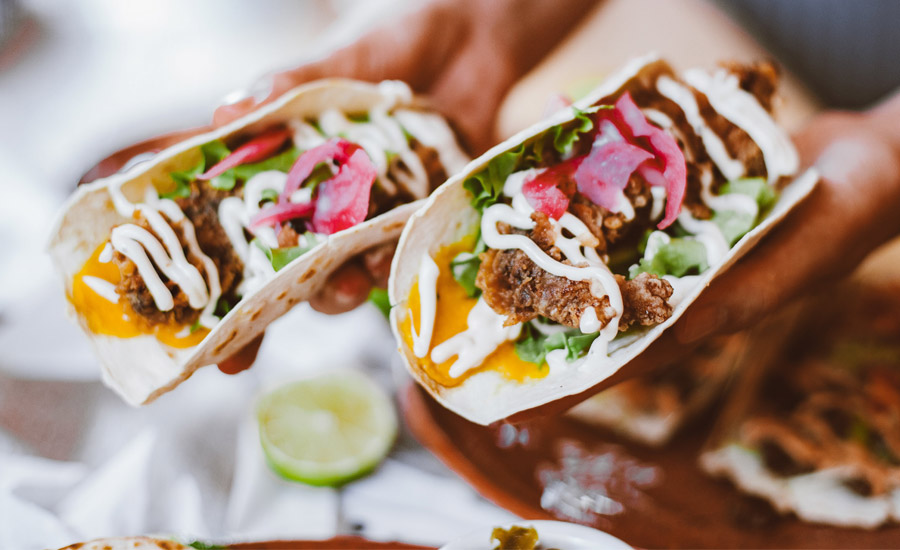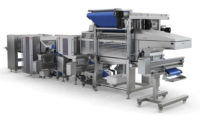The bottom line
- Demand for tortillas, traditional and otherwise, are up
- Labor shortages are impacting tortilla producers
- Efficiency is of keen interest to tortilla makers
Although the tortilla category is prospering overall and should continue to do so, labor shortages are prompting producers’ interest in automation—as long as the quality can be kept high—while tortilla consumers have turned toward healthier options and innovative flavors.
Like many categories, tortillas saw foodservice demand plummet while retail sales grew to backfill three years ago when the pandemic hit, says Jim Kabbani, CEO of the Tortilla Industry Association. “The first impact that this had on our producer members was that, depending on how they were focused, either they made the transition easily, or they were adversely impacted, or they had more business than they could handle,” he says.
Over the following year, tortilla producers recalibrated and retooled their relationships, and many who had taken a hit as a result of the foodservice decline ended up teaming with those who had “more than they could handle,” and co-packing relationships grew, Kabbani says. “The upshot was increased focus on production efficiency, reduction in labor, and increased throughput,” he adds.
Bill Everett, global account manager at Peerless Food Equipment, believes the tortilla category has been growing, based on what he hears from producer customers that purchase his company’s mixing equipment. “Quotations are very strong, and usually that leads to lots of orders,” he says. “It doesn’t seem like tortillas are slowing down. It’s still trending very strong. I don’t foresee that changing.”
Equipment demands
Kabbani has seen an emphasis on companies investing in new equipment since the pandemic and the reduction in the labor force that occurred during that time. Producers are interested in machinery that’s both more efficient and designed to reduce labor, particularly in the packaging step at the end of the production line, he says.
Energy efficiency has been less of an emphasis as producers have retooled, with the use of fuels like natural gas remaining relatively stable, Kabbani says. In terms of equipment size, larger members of the association have found it useful to install a small pilot line “on which they could test their formulations, without interrupting the flow of larger production lines,” he relates.
Everett reports that tortilla bakeries he visits continue to experience challenges in hiring enough manual labor. “They’re asking for automation options,” he says. “That’s when we would, depending on the type of tortillas they’re making, direct them to a dough chunker, something that would take a large mass and break it into smaller chunks, and have it conveyed to their divided or process liner.”
Jonathan Lasecki, director of engineering for Ashworth Brothers, Inc., says the tortilla equipment industry has experienced the same labor and materials shortages as may others, although materials have become more readily available in the past 12 to 18 months, if not quite as easily as pre-pandemic. “Lead times are longer, and that pushes the equipment, and belt-building, out longer,” he says. “A lot of people [workers] have left the market, which has led us to focus more on automation and increased throughput, although those are things we’ve always focused on.”
Ashworth has been examining how to build its belting equipment more efficiently and effectively, not necessarily with fewer people but making the best use of the people the company has, Lasecki says. A desire for energy efficiency impacts a belt-maker less than it would a company that constructs the baking equipment itself, he says.
Producer customers of Ashworth also have become more interested in automation, particularly local tortilla plants that service a handful of neighborhoods in a given city, Lasecki says. “Our business has changed to be not only big producers, but also smaller producers, looking to automate and service customers,” he says. That’s also resulted in the need for “smaller, shorter, narrower belts. We’re seeing an increase in sales on that side, as well.”
Automation is top-of-mind for customers of AM Manufacturing as well, according to Mark Van Drunen, president. “You want to eliminate labor and create equipment that adjusts itself as much as possible,” he says. “The fewer settings and inputs the user has to be trained on … they can let anyone run it, as opposed to having a lifelong person. Those conditions don’t seem to be around anymore. The more turnover there is, the more touch-one-button-and-walk-away, is what people are looking for. That’s the biggest thing people want.”

Courtesy of AM Manufacturing
Machines with greater throughput and energy efficiency are also sought after, with the latter particularly popular in Europe, Van Drunen says. “Certain utilities like natural gas may not be available, or the electricity cost per unit” is too high, he says. “In the U.S., we tend to have more affordable cost-per-unit for most energy supplies, but that is something people here are talking about more, too.”
Lastly, customers of AM Manufacturing increasingly have been requesting the ability to make tortillas that are gluten-free or contain inclusions like almonds, pistachios, cauliflower, spinach, or tomatoes, whether to meet certain dietary demands or add flavors, Van Drunen says. That’s resulted in the need for engineering changes in the equipment, and “those improvements translate back into general flour tortillas,” he says. “It’s helped us innovate more.”
Producers Tortillas Inc., with a few more than 100 employees, has considered greater automation but always keeps in mind the fact that its customers expect a “homestyle” quality tortilla, says Yurelis Castro Martinez, production operations manager.
“It’s hard to keep that quality when we’re trying to find better ways, and faster ways, to get the production line done with automation and new systems,” says Dominic Martinez, sales representative. “That is something we run into when it comes to new technology, is trying to find new technology that not only meets our standards, but our customers’ standards as well.”
Castro Martinez notes that many orders that Tortillas Inc. receives are for smaller batches, which don’t gain the same degree of efficiencies through automation, although the company does need to produce larger batches at times. “That’s a good point,” Martinez adds. “Finding a happy medium for the mom-and-pop shops, while catering to more than half the [Vegas] Strip, is a challenge we do run into.”
Consumer trends
In terms of consumer trends, Kabbani has seen less innovation with “crazy flavors” and more emphasis on healthier eating trends, which in this category as in others has driven SKUs that offer low-carb or gluten-free. But some producers aren’t entirely sure how they can articulate that on a tortilla product package in a way that stays within regulatory guidelines on labeling, he says.
“What can you call healthier? What can you call gluten-free? What does it take to be low-carb?” Kabbani says, adding that industry conferences like the Tortilla Industry Association’s annual event, scheduled for May 9–10 in Las Vegas, keep producers updated on the evolving answers to such questions.
Although it doesn’t affect demands for his company’s upstream-focused equipment, Everett hears a lot about wider demands for different sizes of tortillas than in the past. “Tortillas used to be six-inch diameter,” he says. “Now there’s eight-inch, and 10-inch, and three-inch, and four-inch.”

Courtesy of Roman Odintsov via Pexels
Everett’s customers are definitely focused on better-for-you products, he adds. “The zero-net-carb tortillas. That’s definitely something that is trending in the industry.” Lasecki has seen the same trends, although it doesn’t really affect the belting equipment that Ashworth produces. “I see the same things everyone else sees on the news,” he says.
Tortillas Inc. has seen a number of flavor-related trends in the category. Sales representative Stiveen Castro Martinez says foodservice outlets ranging from restaurants to fitness center cafes are asking for different flavored wraps. “We have all the way from spinach to tomato basil,” he says. “We have like six different flavors. A lot of these people are gym-crazy. They go to these healthy spots, and they consume our tortillas.”
Yurelis Castro Martinez reports that chefs have been asking for Highlime flavored tortillas because of interest in the unusual taste when used in tacos. And Dominic Martinez says the birria sauce has become extremely popular, trending on social media and “in our inbox, as well,” which has prompted Tortillas Inc. to create its own birria sauce that’s “been doing very well in the market right now,” he says. “The birria trend has been pretty crazy here in Las Vegas. It was just a few places that were starting off introducing it, and now it’s birria ramen, birria this, birria that.”
Lasecki anticipates continued strength in the category going into 2024. “I don’t see a big increase or decrease in what’s out there,” he says. “We’re focusing on these smaller customers, which has been a focus of ours for a long time: tortillas sold fresh, sold local. It’s going to be a big part of our focus as we go forward into next year.”
Bottom line, Kabbani says that demand for tortillas continues to grow at both retail and foodservice. “As foodservice recovered, we did not see a proportional shrinkage in retail,” he says. “Retail held its own, while foodservice grew. The cumulative effect has been a significant uptick in overall volume. Trying to do more with less labor resources is the driving thing.”




